In the increasingly competitive world of SUVs, the Audi Q5 and Renault Rafale emerge as two distinct contenders, each offering unique strengths and innovations. This article will provide a comprehensive comparison of these vehicles, focusing on their technical specifications, performance, and innovative features to help potential buyers make an informed decision.
Audi Q5 vs Renault Rafale – Which model is better for everyday use?
Compare performance, boot capacity, efficiency and price at a glance.
Find out which car is the better choice for you – Audi Q5 or Renault Rafale?
Engine and Performance
The Audi Q5 boasts a range of engine options, including Diesel MHEV, Petrol MHEV, and Plugin Hybrid variants. The power output varies significantly, ranging from 163 HP for the entry-level engine up to a powerful 367 HP for sportier versions. The Q5 also offers impressive torque figures, with values reaching up to 700 Nm in some variants, providing strong acceleration and driving dynamics.
In contrast, the Renault Rafale presents a more simplified engine lineup with Full Hybrid and Plugin Hybrid options, delivering up to 300 HP. Despite the lower peak power, the Rafale excels on fuel efficiency, boasting consumption figures as low as 0.6 L/100km in hybrid modes. The acceleration from 0 to 100 km/h can be achieved in as little as 6.4 seconds, showcasing an impressive performance for a vehicle of its class.
Transmission and Drive Options
The Q5 is equipped with an automatic transmission that features a double-clutch system, offering quick shifts and an engaging driving experience. Additionally, Audi provides both All-Wheel Drive and Front-Wheel Drive configurations, allowing drivers to tailor their vehicle's performance based on their needs.
The Renault Rafale, on the other hand, utilizes a Front-Wheel Drive system coupled with a smooth automatic gearbox. While lacking the versatility of the Q5's All-Wheel Drive options, the Rafale’s drivetrain is designed to enhance efficiency and provide adequate performance for everyday driving.
Dimensions and Interior Space
When it comes to physical dimensions, both SUVs have comparable lengths, with the Q5 measuring 4717 mm and the Rafale slightly shorter at 4710 mm. In terms of width, the Q5 is a tad broader at 1900 mm compared to the Rafale, which measures 1886 mm. Height-wise, the Rafale ranks slightly lower at 1613 mm versus the Q5’s 1662 mm, giving it a more compact profile.
A key advantage for the Rafale is its trunk capacity, which ranges from 539 to 627 liters, compared to the Q5's trunk space, which maxes out around 520 liters. This added space in the Rafale caters well to families and individuals who prioritize cargo capacity.
Innovative Features and Technology
The Audi Q5 is replete with advanced technology, including an intuitive infotainment system, which supports a variety of connectivity options, and sophisticated driver assistance features. Audi's virtual cockpit and high-quality materials create a premium feel inside the Q5, catering to those who value luxury alongside functionality.
On the flip side, the Renault Rafale has embraced modern technology with its hybrid systems, which enhance both fuel efficiency and performance. The vehicle’s electric range is impressive—up to 97 km on electric-only mode—which is ideal for urban environments. Additionally, the Rafale incorporates cutting-edge safety tech and a user-friendly infotainment system, ensuring connectivity and convenience on the go.
Conclusion
Deciding between the Audi Q5 and the Renault Rafale depends largely on what features and performance aspects are most important to the buyer. The Q5 stands out with its powerful engine options, luxurious interior, and drive flexibility, making it an excellent choice for those who seek performance without compromising on comfort.
Meanwhile, the Renault Rafale offers exceptional fuel efficiency and cargo space, making it an attractive option for eco-conscious drivers or families needing ample storage. Ultimately, both SUVs bring their unique strengths to the table, promising a satisfying driving experience for a variety of lifestyles.
Here’s where it gets real: The technical differences in detail
Costs and Efficiency:
Price and efficiency are often the first things buyers look at. Here it becomes clear which model has the long-term edge – whether at the pump, the plug, or in purchase price.
Renault Rafale has a to a small extent advantage in terms of price – it starts at 37500 £, while the Audi Q5 costs 44800 £. That’s a price difference of around 7286 £.
Fuel consumption also shows a difference: Renault Rafale manages with 0.60 L and is therefore convincingly more efficient than the Audi Q5 with 2.50 L. The difference is about 1.90 L per 100 km.
As for range, the Audi Q5 performs hardly perceptible better – achieving up to 100 km, about 3 km more than the Renault Rafale.
Engine and Performance:
Under the bonnet, it becomes clear which model is tuned for sportiness and which one takes the lead when you hit the accelerator.
When it comes to engine power, the Audi Q5 has a somewhat edge – offering 367 HP compared to 300 HP. That’s roughly 67 HP more horsepower.
In acceleration from 0 to 100 km/h, the Audi Q5 is convincingly quicker – completing the sprint in 4.50 s, while the Renault Rafale takes 6.40 s. That’s about 1.90 s faster.
In terms of top speed, the Audi Q5 performs noticeable better – reaching 250 km/h, while the Renault Rafale tops out at 180 km/h. The difference is around 70 km/h.
Space and Everyday Use:
Whether family car or daily driver – which one offers more room, flexibility and comfort?
Both vehicles offer seating for 5 people.
In curb weight, Renault Rafale is somewhat lighter – 1734 kg compared to 1910 kg. The difference is around 176 kg.
In terms of boot space, the Renault Rafale offers to a small extent more room – 627 L compared to 520 L. That’s a difference of about 107 L.
In maximum load capacity, the Renault Rafale performs evident better – up to 1910 L, which is about 437 L more than the Audi Q5.
When it comes to payload, Audi Q5 noticeable takes the win – 565 kg compared to 444 kg. That’s a difference of about 121 kg.
Who comes out on top?
Overall, the Renault Rafale shows itself to be dominates this comparison and secures the title of DriveDuel Champion.
It convinces with the more balanced overall package and proves to be the more versatile choice for everyday use.
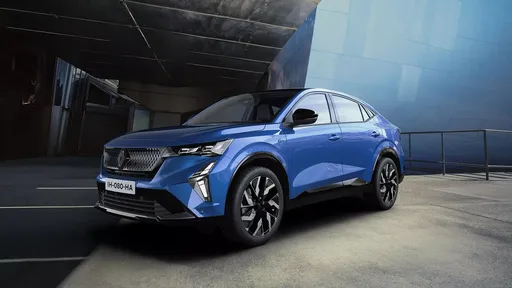 @ Renault Group Media
@ Renault Group Media
Renault Rafale
Audi Q5
The Audi Q5 feels like the sensible luxury choice — polished cabin materials, a calm ride and enough tech to keep commuters and weekend adventurers equally pleased. It won't shout for attention but will quietly check the boxes for buyers who want refinement, space and everyday usability with a dash of Audi charisma.
details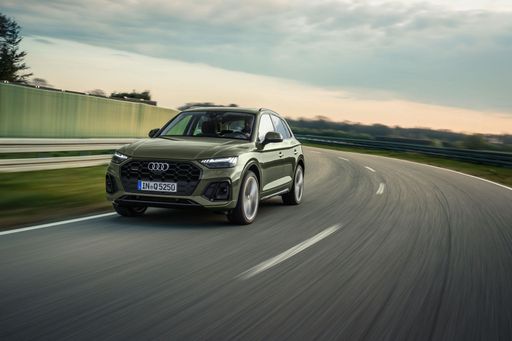 @ Audi AG
@ Audi AG
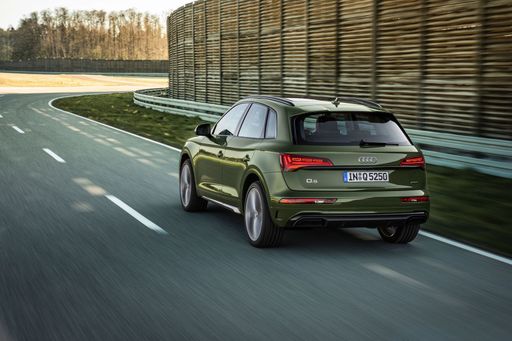 @ Audi AG
@ Audi AG
 @ Audi AG
@ Audi AG
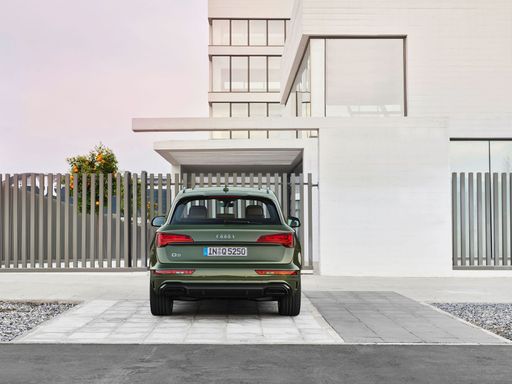 @ Audi AG
@ Audi AG
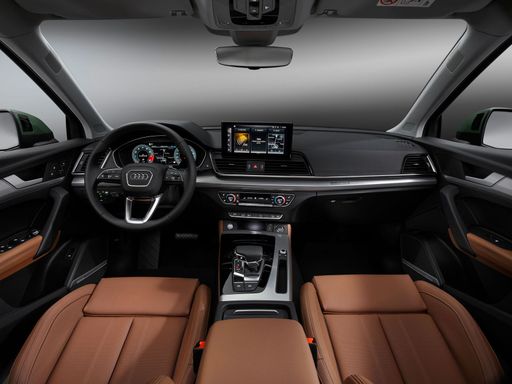 @ Audi AG
@ Audi AG
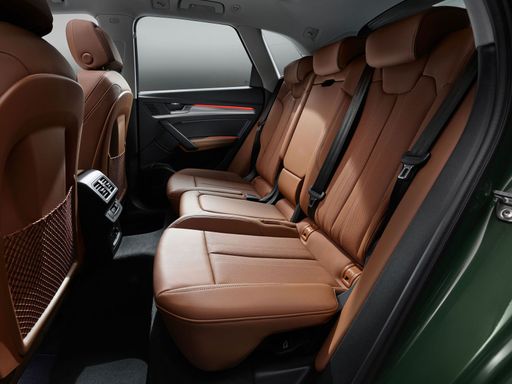 @ Audi AG
@ Audi AG
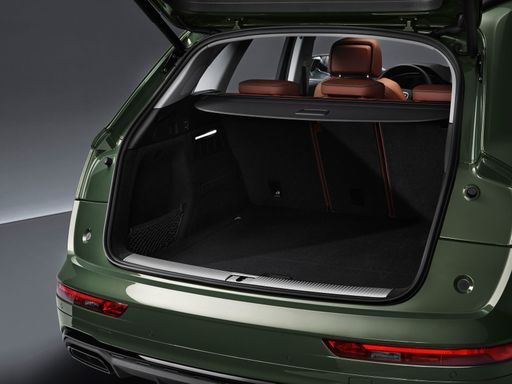 @ Audi AG
@ Audi AG
Renault Rafale
The Renault Rafale dresses bold coupé-inspired lines around a practical crossover body, turning heads without trying too hard. Inside it serves up a comfortable, well-equipped cabin and engaging driving manners, making it a clever choice for buyers who want a bit of panache with their daily commute.
details @ Renault Group Media
@ Renault Group Media
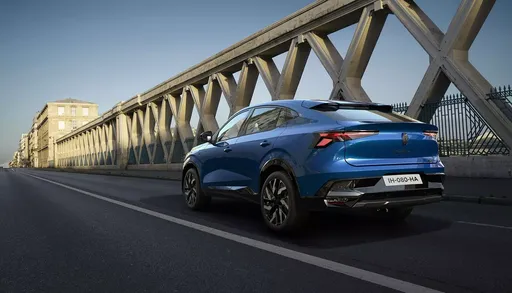 @ Renault Group Media
@ Renault Group Media
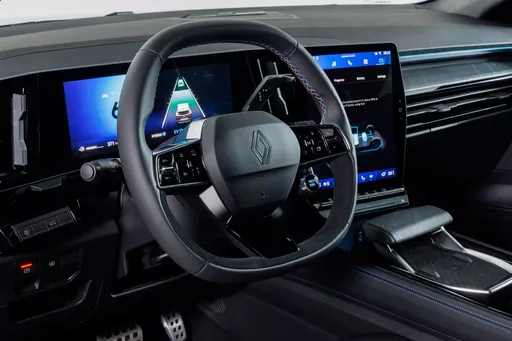 @ Renault Group Media
@ Renault Group Media
 @ Audi AG
@ Audi AG
|
 @ Renault Group Media
@ Renault Group Media
|
|
|
|
Costs and Consumption |
|
|---|---|
|
Price
44800 - 78900 £
|
Price
37500 - 49500 £
|
|
Consumption L/100km
2.5 - 8.3 L
|
Consumption L/100km
0.6 - 5 L
|
|
Consumption kWh/100km
-
|
Consumption kWh/100km
-
|
|
Electric Range
92 - 100 km
|
Electric Range
97 km
|
|
Battery Capacity
20.70 kWh
|
Battery Capacity
-
|
|
co2
56 - 189 g/km
|
co2
14 - 109 g/km
|
|
Fuel tank capacity
55 - 65 L
|
Fuel tank capacity
55 L
|
Dimensions and Body |
|
|---|---|
|
Body Type
SUV
|
Body Type
SUV
|
|
Seats
5
|
Seats
5
|
|
Doors
5
|
Doors
5
|
|
Curb weight
1910 - 2245 kg
|
Curb weight
1734 - 2025 kg
|
|
Trunk capacity
433 - 520 L
|
Trunk capacity
539 - 627 L
|
|
Length
4717 mm
|
Length
4710 mm
|
|
Width
1900 mm
|
Width
1886 mm
|
|
Height
1647 - 1656 mm
|
Height
1613 mm
|
|
Max trunk capacity
1300 - 1473 L
|
Max trunk capacity
1826 - 1910 L
|
|
Payload
490 - 565 kg
|
Payload
415 - 444 kg
|
Engine and Performance |
|
|---|---|
|
Engine Type
Plugin Hybrid, Petrol MHEV, Diesel MHEV
|
Engine Type
Plugin Hybrid, Full Hybrid
|
|
Transmission
Automatic
|
Transmission
Automatic
|
|
Transmission Detail
Dual-Clutch Automatic
|
Transmission Detail
Automatic Gearbox
|
|
Drive Type
All-Wheel Drive, Front-Wheel Drive
|
Drive Type
All-Wheel Drive, Front-Wheel Drive
|
|
Power HP
204 - 367 HP
|
Power HP
200 - 300 HP
|
|
Acceleration 0-100km/h
4.5 - 8.6 s
|
Acceleration 0-100km/h
6.4 - 8.9 s
|
|
Max Speed
226 - 250 km/h
|
Max Speed
180 km/h
|
|
Torque
340 - 550 Nm
|
Torque
-
|
|
Number of Cylinders
4 - 6
|
Number of Cylinders
3
|
|
Power kW
150 - 270 kW
|
Power kW
147 - 221 kW
|
|
Engine capacity
1968 - 2995 cm3
|
Engine capacity
1199 cm3
|
General |
|
|---|---|
|
Model Year
2025
|
Model Year
2024 - 2025
|
|
CO2 Efficiency Class
B, E, F, G
|
CO2 Efficiency Class
B, C
|
|
Brand
Audi
|
Brand
Renault
|
What drivetrain options does the Audi Q5 have?
The Audi Q5 is available as All-Wheel Drive or Front-Wheel Drive.
The prices and data displayed are estimates based on German list prices and may vary by country. This information is not legally binding.
